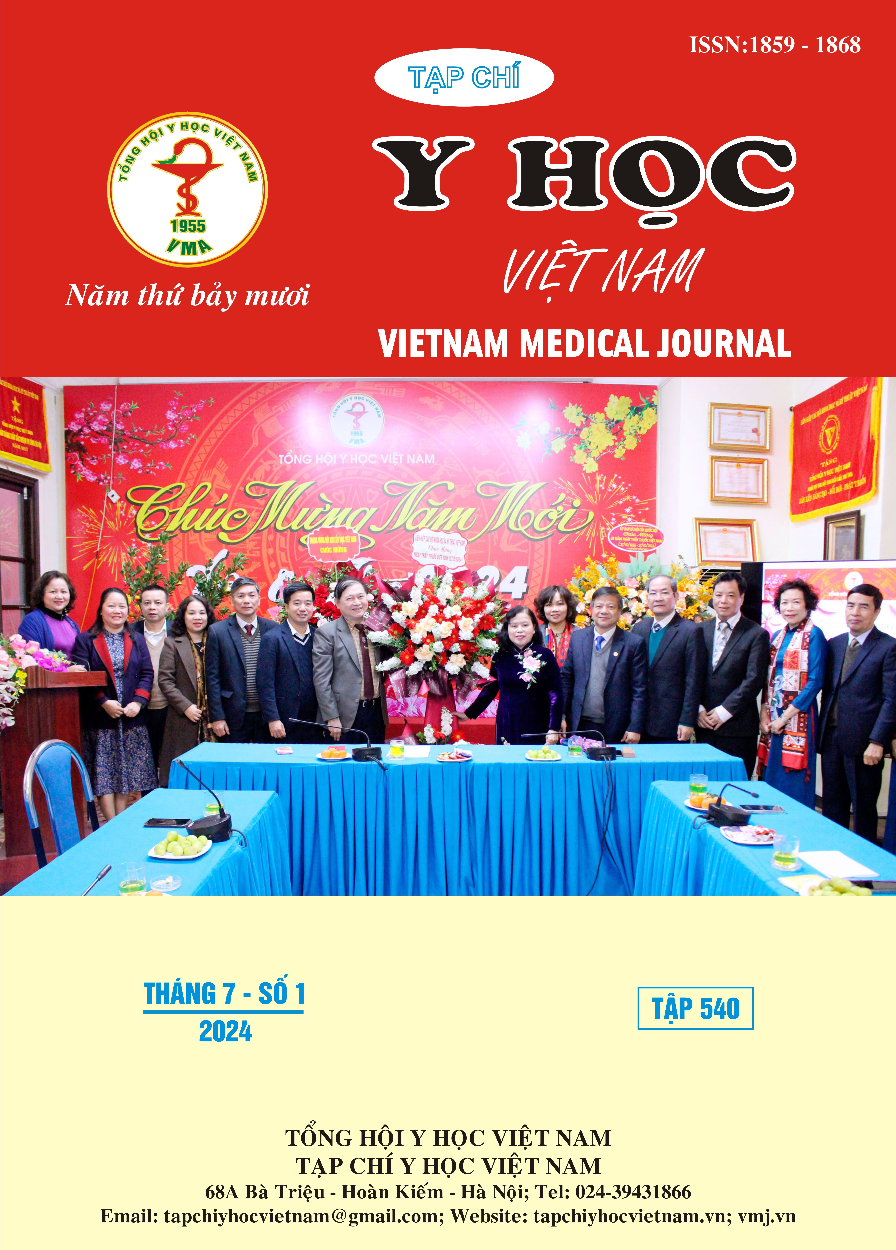RESEARCH ON THE PROPORTION OF STRESS AND SOME RELATED FACTORS IN PATIENTS AFTER RECOVERY FROM COVID-19
Main Article Content
Abstract
Objective: We aimed to investigate the proportion of Stress and some related factors in patients after recovery from COVID-19 who were examined at Military Hospital 103. Subjects and methods: a total of 111 patients aged from 20 to 48 years old with history of being diagnosed as positive for Covid-19 by realtime RT-PCR test or Rapid antigen test were recruited at the Department of Functional Diagnostics, Military Hospital 103 from February 2022 to May 2022. The patient's stress status was assessed using the Anxiety - Depression - Stress assessment questionnaire (DASS 21). Pearson correlation or Independent Samples T-Test is used to evaluate relationships between Stress score with age, height, weight, BMI, time after Covid-19 infection, smoking status, and alcohol consumption. Analysis of variance was used to compare the Stress score between the groups of subjects after mild, moderate and severe COVID-19 infection. Results: The proportion of patients with symptoms of Stress was 15.3%. The group of patients who smoked and were infected with severe COVID-19 they showed significant increase in Stress score as compared with the group who did not smoke and recovered from mild and moderate COVID-19 infection. Conclusion: The proportion of Stress manifestations in subjects after recovery from COVID-19 was 15.3%. Smoking and severe post-COVID-19 infection were risk factors for increased stress in subjects after recovery from COVID-19 infection.
Article Details
Keywords
Stress, influencing factors, after Covid-19 infection
References
2. Ferrando SJ, Lynch S, Ferrando N, Dornbush R, Shahar S, Klepacz L. Anxiety and posttraumatic stress in post-acute sequelae of COVID-19: prevalence, characteristics, comorbidity, and clinical correlates. Front Psychiatry. 2023.14:1160852.
3. Zeng N, Zhao YM, Yan W, Li C, Lu QD, Liu L, Ni SY, Mei H, Yuan K, Shi L, Li P, Fan TT, Yuan JL, Vitiello MV, Kosten T, Kondratiuk AL, Sun HQ, Tang XD, Liu MY, Lalvani A, Shi J, Bao YP, Lu L. A systematic review and meta-analysis of long term physical and mental sequelae of COVID-19 pandemic: call for research priority and action. Mol Psychiatry. 2023. 28(1):423-433.
4. Lovibond PF, Lovibond SH. The structure of negative emotional states: comparison of the Depression Anxiety Stress Scales (DASS) with the Beck Depression and Anxiety Inventories. Behav Res Ther. 1995. 33(3):335-43
5. Trang LTT, Ngoc Le C, Chutipatana N, Shohaimi S, Suwanbamrung C. Prevalence and predictors of depression, anxiety, and stress among recovered COVID-19 patients in Vietnam. Rocz Panstw Zakl Hig. 2023.74(2):217-230.
6. Hoang VTH, Nguyen HTH. Factors associated with depression, anxiety, and stress symptoms among men in a rural area in Vietnam during COVID-19. Front Psychiatry. 2022. 13:987686.
7. Crook H, Raza S, Nowell J, Young M, Edison P. Long covid-mechanisms, risk factors, and management. BMJ. 2021.374:n1648.
8. Guedj E, Million M, Dudouet P, Tissot-Dupont H, Bregeon F, Cammilleri S, Raoult D. 18F-FDG brain PET hypometabolism in post-SARS-CoV-2 infection: substrate for persistent/delayed disorders? Eur J Nucl Med Mol Imaging. 2021. 48(2):592-595.
9. Arnsten AF. Stress signalling pathways that impair prefrontal cortex structure and function. Nat Rev Neurosci. 2009.10(6):410-22.


